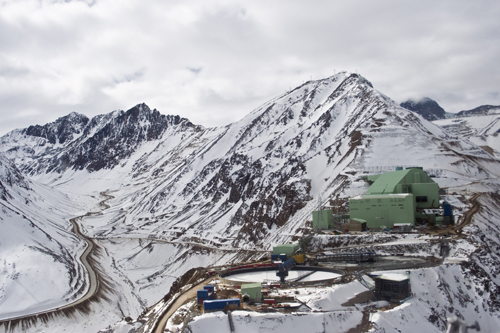
Approximately 65 kilometres away from Santiago, in the Metropolitan Region, and 3,500 metres above sea level, one will find the Los Bronces division of Anglo American. Managed by a team of executives, the head of which is General Manager, Christian Thiele, the Los Bronces division boasts a workforce of more than 1,700 people, including company employees and operation and project contractors. Collectively they are responsible for implementing the Los Bronces Development Project, the objective of which is to boost the mine's production capacity.



 AngloAmerican-Americas-Mining-Feb14-Bro-s.pdf
AngloAmerican-Americas-Mining-Feb14-Bro-s.pdf






